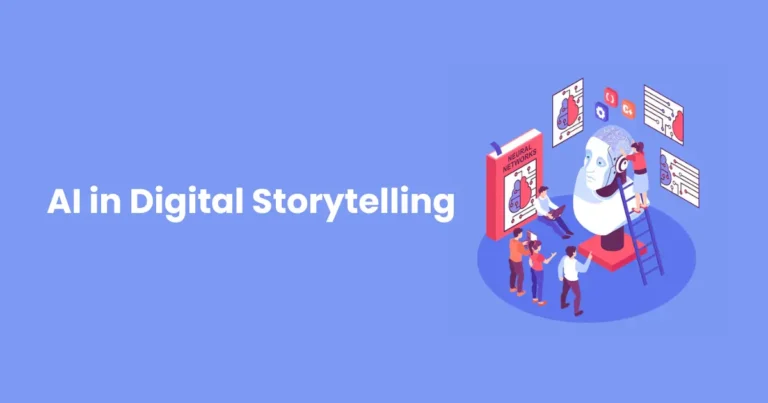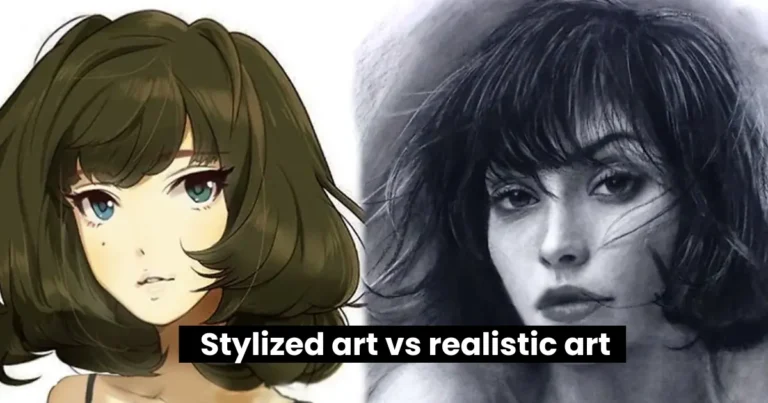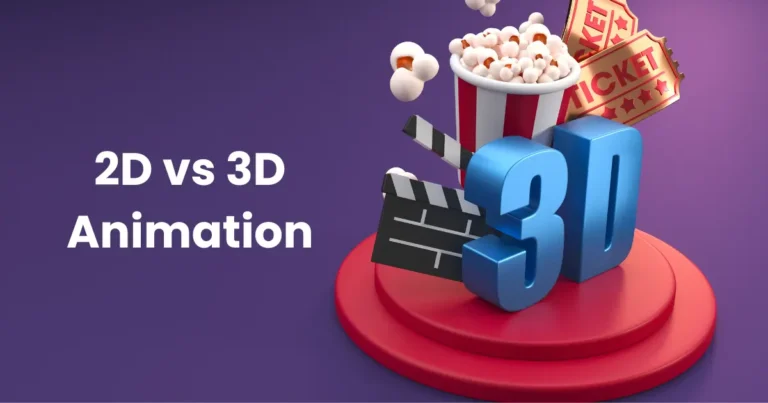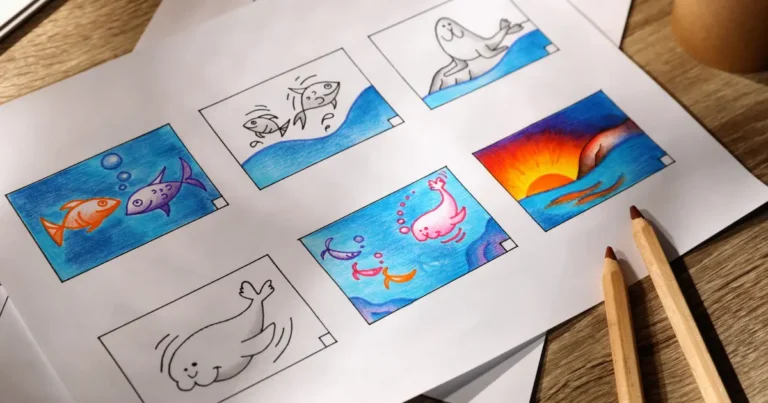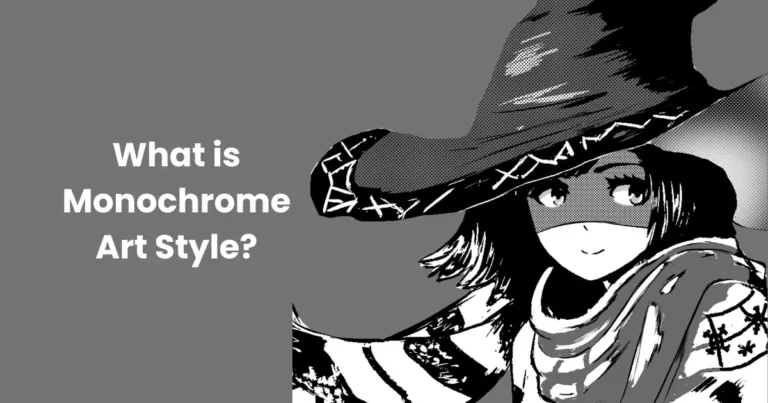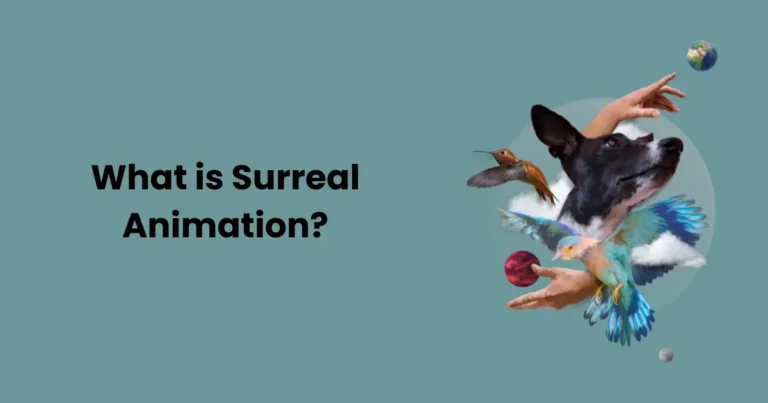What is Animation Drawing | How does animation drawing work?
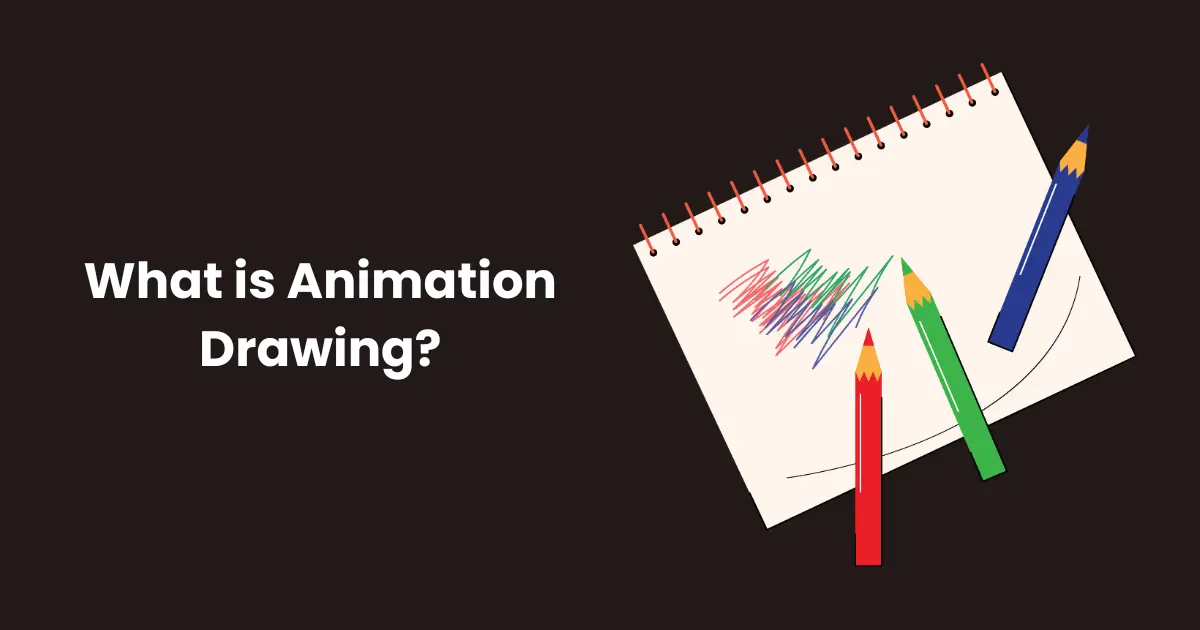
Contents
- 1 History of Animation Drawing
- 2 Types of Animation Drawings
- 3 The Role of Animation Drawing in Character Development
- 4 Animation Drawing in Modern Animation
- 4.1 1. Integration of Traditional and Digital Techniques
- 4.2 2. Animation Drawing for 3D Projects
- 4.3 3. Animation Drawing in 2D Revival
- 4.4 4. Storyboarding and Pre-Production
- 4.5 5. Animation Drawing for Specialized Techniques
- 4.6 6. Animation Drawing for Emerging Media
- 4.7 7. Education and Accessibility
Animation drawing is the process of creating sequential illustrations that, when played in rapid succession, create the illusion of movement. It is a fundamental step in the animation pipeline, serving as the foundation for the visual storytelling that captivates audiences. Animation drawings are typically used to design characters, environments, and storyboards, forming the blueprint for animated productions.
These drawings can be crafted traditionally, using pencil and paper, or digitally, using modern software. Regardless of the medium, animation drawing remains at the heart of the creative process, ensuring that animators can effectively convey motion, emotions, and narratives. Animation drawing is not just a technical skill; it’s a craft that blends creativity with precision, making it one of the most rewarding aspects of animation.
History of Animation Drawing
Animation drawing has a rich history that dates back to the origins of motion picture art. This form of visual storytelling evolved through innovations, artistic breakthroughs, and technological advancements. Let’s explore its journey.

The Beginnings of Animation Drawing
The concept of animation began long before the advent of modern filmmaking. Early examples include devices like the phenakistoscope and the zoetrope, which used sequential drawings to simulate movement. These tools, developed in the 19th century, were precursors to the animation techniques we know today.
The first recorded instance of animation drawing can be attributed to Émile Cohl, a French artist who created Fantasmagorie in 1908. This short film, composed of thousands of hand-drawn frames, is widely regarded as the first animated cartoon.
The Rise of Hand-Drawn Animation
In the early 20th century, animation drawing became a recognized art form. Studios like Fleischer Studios and Disney elevated the craft with advancements in storytelling and character design. Key milestones include:
- 1928: Mickey Mouse and Steamboat Willie
Walt Disney revolutionized animation with Steamboat Willie, the first synchronized sound cartoon. The success of this hand-drawn animation marked the beginning of Disney’s dominance in the industry. - 1937: Snow White and the Seven Dwarfs
Disney’s Snow White was the first full-length animated feature film, created using traditional animation drawing techniques. Its success demonstrated the potential of animation as a storytelling medium.
Pioneers of Animation Drawing
Many individuals have shaped the evolution of animation drawing:
- Winsor McCay: Known for his groundbreaking work Gertie the Dinosaur (1914), McCay is considered one of the earliest masters of hand-drawn animation.
- Walt Disney: A visionary who brought animation drawing to the global stage, Disney introduced storytelling depth and technical innovation to the art form.
- Ub Iwerks: Often called the “master animator,” Iwerks co-created Mickey Mouse and refined animation techniques that are still influential today.
The Transition to Digital Animation Drawing
The 1990s marked a pivotal shift in the history of animation drawing. Studios began adopting digital tools, replacing traditional cel animation with software-based methods. Films like The Lion King (1994) combined hand-drawn animation with computer-generated imagery, bridging the gap between traditional and modern techniques.
Today, digital animation drawing tools like Toon Boom and Adobe Animate have become industry standards, enabling animators to create detailed, vibrant animations with greater efficiency.
Animation Drawing Today
While technology has transformed how animation drawings are created, the essence remains the same. The craft continues to be a cornerstone of the animation process, bridging the gap between the animator’s imagination and the audience’s experience.
From hand-drawn sketches on paper to intricate digital frames, the history of animation drawing showcases the power of artistry and innovation in creating magic on screen.
Types of Animation Drawings
Animation drawing can be categorized based on the techniques and tools used, as well as the style of animation being created. Each type serves a specific purpose in bringing animated stories to life. Let’s dive into the most prominent types of animation drawings.

1. Traditional Hand-Drawn Animation
Also known as 2D animation, this type involves creating each frame by hand, typically on paper or cels. It’s the oldest form of animation drawing and remains beloved for its organic and timeless feel.
Features:
- Artists draw each frame manually.
- Requires precise skills in anatomy, movement, and timing.
- Used in classic films like Snow White and the Seven Dwarfs and The Lion King.
Applications:
- Feature films.
- TV series.
- Artistic shorts.
2. Digital Animation Drawing
In digital animation, drawings are created using software like Adobe Animate, Toon Boom Harmony, or Clip Studio Paint. This type has streamlined the animation process, offering tools for faster revisions and greater flexibility.
Features:
- Drawings are made on tablets or computers.
- Easier to add color, effects, and layers.
- Ideal for blending 2D and 3D animation techniques.
Applications:
- Modern 2D animations.
- Web animations.
- Video games.
3. Storyboard Drawings
Storyboards are an essential type of animation drawing used during pre-production. They outline the sequence of scenes, camera angles, and character actions.
Features:
- Focus on storytelling and pacing rather than detailed drawings.
- Serve as a visual script for animators.
- Help identify continuity and narrative flow issues.
Applications:
- Planning animated films and TV series.
- Pitching animation concepts to stakeholders.
4. Character Design Drawings
These are conceptual drawings that define a character’s appearance, personality, and expressions. They form the foundation for animating a character.
Features:
- Emphasis on proportions, poses, and details.
- Includes turnaround sheets (showing characters from multiple angles).
- Explores various facial expressions and costumes.
Applications:
- Character development for animations, video games, and comics.
5. Key Frame Drawings
Key frames are critical poses or moments within a sequence of movement. These drawings form the backbone of an animation, capturing the most important positions of a character or object.
Features:
- Depict the starting and ending points of an action.
- Serve as references for creating in-between frames.
- Require a deep understanding of motion and timing.
Applications:
- Structuring complex animations.
- Creating action scenes and fluid transitions.
6. In-Between Drawings
In-between drawings, or tweening, fill the gaps between key frames to create smooth motion. This type of animation drawing requires consistency and attention to detail.
Features:
- Focus on maintaining the flow between key frames.
- Can be automated using digital tools.
Applications:
- Adding realism to character movements.
- Smoothing transitions in action sequences.
7. Background and Environment Drawings
These drawings set the scene for animated sequences, providing context and atmosphere for the story.
Features:
- Emphasize perspective, color, and lighting.
- Enhance immersion by complementing character actions.
Applications:
- Designing settings for films and games.
- Establishing mood in animated shorts.
8. Rough Sketches and Thumbnails
Before creating detailed frames, animators produce rough sketches and thumbnail drawings to explore ideas quickly.
Features:
- Fast and loose sketches to brainstorm poses and sequences.
- Serve as a foundation for detailed animation drawings.
Applications:
- Pre-production planning.
- Experimenting with different motion paths.
9. Layout Drawings
These define the staging of characters and objects within a scene, ensuring clarity and proper composition.
Features:
- Focus on camera angles and framing.
- Provide a blueprint for animators and background artists.
Applications:
- Structuring scenes in animated films.
- Ensuring consistency in visual storytelling.
Understanding the various types of animation drawings helps animators master the craft and create seamless, engaging animations. From hand-drawn classics to modern digital techniques, each type plays a crucial role in the animation pipeline, contributing to the magic that captivates audiences worldwide.
The Role of Animation Drawing in Character Development
Animation drawing is a cornerstone of character development, serving as a creative process that transforms ideas into compelling visual personas. Through this art form, animators breathe life into characters, defining their physical traits, personalities, and emotional depth. Let’s explore the crucial role of animation drawing in crafting unforgettable animated characters.

1. Visualizing Character Design
Animation drawing begins with the visualization of a character’s appearance. This stage involves experimenting with shapes, proportions, and styles to create a distinctive design that aligns with the story’s theme.
Key Aspects:
- Silhouette Creation: A clear and recognizable silhouette ensures the character stands out visually.
- Distinctive Features: Unique facial and body features make characters memorable.
- Stylization: Animation drawing allows for exaggerated proportions, such as oversized heads or elongated limbs, to emphasize traits.
Example: Mickey Mouse’s large ears and gloves make him instantly recognizable and endearing.
2. Establishing Personality Through Drawing
Every stroke in animation drawing contributes to building a character’s personality. From facial expressions to body language, the details in these drawings provide clues about the character’s traits, emotions, and behaviors.
Key Aspects:
- Facial Expressions: Subtle changes in eyebrows, eyes, and mouths can convey a wide range of emotions, from joy to anger.
- Posture and Movement: Slouched shoulders might indicate shyness, while a confident stride suggests boldness.
- Clothing and Accessories: Costumes and accessories reflect a character’s background, occupation, or personality.
Example: In The Incredibles, each character’s posture and costume highlight their superpowers and family roles.
3. Exploring Emotional Range
Animation drawing allows animators to explore and depict a character’s emotional range. By sketching various expressions and poses, animators ensure the character can convey nuanced emotions that resonate with audiences.
Key Aspects:
- Expression Sheets: Animators create sheets showcasing a character’s emotions, from happiness to frustration.
- Body Language Studies: Gesture drawings capture how emotions influence physical movement.
Example: Disney’s Inside Out explores emotions through characters like Joy and Sadness, whose designs and expressions reflect their feelings.
4. Character Turnarounds and Consistency
Animation drawing ensures consistency in a character’s design throughout the animation process. Turnaround drawings provide a 360-degree view of the character, guiding animators in maintaining uniformity across scenes.
Key Aspects:
- Turnaround Sheets: Include front, side, back, and three-quarter views of the character.
- Scale Charts: Ensure characters maintain proportional relationships with each other.
Example: In Frozen, turnaround sheets ensured Elsa’s intricate costume details were consistent in every frame.
5. Defining Movement Style
A character’s movements are as defining as their appearance. Animation drawing helps establish a character’s unique motion style, whether graceful, clumsy, or powerful.
Key Aspects:
- Gesture Studies: Sketches of a character in motion help refine their unique movements.
- Action Poses: Drawings of characters in dynamic actions, like jumping or running, define their physicality.
Example: Spider-Man’s fluid, acrobatic poses are iconic and instantly recognizable, thanks to careful animation drawing.
Animation drawing is an indispensable tool in character development, allowing animators to transform abstract ideas into dynamic, relatable figures. From defining appearances to exploring emotional depth and movement, every drawing contributes to the creation of characters that captivate audiences and leave lasting impressions. Through this craft, animators continue to shape the world of storytelling, one drawing at a time.
Animation Drawing in Modern Animation
As animation technology evolves, animation drawing remains a critical component of modern productions. While digital tools have revolutionized the process, the core principles of animation drawing—storytelling, character creation, and movement visualization—continue to anchor the craft. Let’s explore the role and adaptations of animation drawing in contemporary animation.

1. Integration of Traditional and Digital Techniques
Modern animation seamlessly combines traditional hand-drawn techniques with advanced digital tools, preserving the artistry of drawing while leveraging the efficiency of technology.
Key Features:
- Hybrid Workflows: Sketches are drawn by hand and digitized for refinement and animation.
- Software Support: Programs like Toon Boom Harmony and Adobe Animate mimic traditional workflows with added flexibility.
- Tablet Use: Devices like Wacom tablets and iPads allow animators to draw directly on digital surfaces, merging old and new techniques.
Example: Disney’s The Princess and the Frog employed traditional hand-drawn animation enhanced with digital coloring and compositing.
2. Animation Drawing for 3D Projects
In 3D animation, drawing remains a vital pre-production and conceptual tool. Animators often rely on sketches to define characters, environments, and movements before translating them into 3D models.
Key Roles:
- Character Concept Art: Initial sketches help establish a character’s design, proportions, and personality.
- Motion Planning: Drawing arcs and poses helps animators visualize key movements before rigging.
- Texture and Detail Design: Artists use drawings to conceptualize textures, patterns, and finer details for 3D assets.
Example: Pixar’s Soul involved extensive drawing for character designs, mood boards, and environment concepts before 3D modeling.
3. Animation Drawing in 2D Revival
Although 3D dominates the industry, 2D animation has seen a revival, thanks to animation drawing’s timeless charm. Modern tools allow animators to combine traditional 2D artistry with digital efficiencies.
Key Advancements:
- Vector-Based Animation: Software like Adobe Animate uses vector drawings for scalable, crisp animations.
- Stylized Approaches: Studios experiment with hand-drawn aesthetics combined with digital effects.
- Independent Animation: Many indie projects rely on 2D animation drawing for its accessibility and artistic appeal.
Example: Klaus on Netflix showcased hand-drawn animation with innovative lighting techniques for a fresh, modern look.
4. Storyboarding and Pre-Production
Animation drawing is indispensable in the pre-production stages of modern animation, helping animators plan visual storytelling elements.
Key Contributions:
- Storyboards: Drawings map out scenes, camera angles, and character actions to visualize the narrative.
- Animatics: Rough sketches are sequenced to test pacing and timing before full production.
- Mood Boards: Drawings establish the visual tone, color palettes, and design language of the project.
Example: DreamWorks’ How to Train Your Dragon used extensive storyboarding to choreograph action sequences and emotional moments.
5. Animation Drawing for Specialized Techniques
Certain animation styles and techniques heavily rely on drawing to achieve unique effects and aesthetics.

Key Applications:
- Frame-by-Frame Animation: Hand-drawn animation is often used for detailed frame-by-frame effects, such as smoke, water, or magical elements.
- Stylized Art: Techniques like rotoscoping or minimalist designs depend on animation drawing for their distinct look.
- Experimental Projects: Many avant-garde and indie films use hand-drawn sketches to push artistic boundaries.
Example: Richard Linklater’s A Scanner Darkly employed rotoscoping, where live-action footage was traced over with animation drawings.
6. Animation Drawing for Emerging Media
New platforms and technologies, such as virtual reality (VR) and augmented reality (AR), are opening up innovative avenues for animation drawing.
Key Innovations:
- VR Animation: Tools like Tilt Brush enable animators to draw and animate in 3D space.
- Interactive Media: Animation drawing helps design characters and assets for interactive experiences.
- Mobile and Web Animation: Simplified, hand-drawn styles are widely used in short-form content for social media and apps.
Example: VR projects like Google’s Pearl incorporate animation drawing into immersive storytelling environments.
7. Education and Accessibility
Modern animation drawing has become more accessible, thanks to digital tools and online resources. Aspiring animators can learn and practice drawing techniques without the need for expensive materials or setups.
Key Benefits:
- Accessible Tools: Free or affordable software like Krita and OpenToonz enables entry-level animators to practice drawing.
- Online Learning: Platforms like YouTube and Skillshare offer tutorials for mastering animation drawing.
- Global Collaboration: Cloud-based software allows artists worldwide to collaborate on drawing-based animation projects.
Example: Indie creators on platforms like YouTube showcase hand-drawn animations using digital tools.
Animation drawing remains a vital part of modern animation, bridging the gap between tradition and innovation. Whether it’s crafting intricate characters for 3D films, reviving 2D artistry, or exploring new media like VR, animation drawing continues to evolve. Its adaptability ensures that the art form remains at the heart of animated storytelling, enchanting audiences with each frame.
Conclusion
Mastering animation drawing is a transformative journey that combines artistic skill, technical knowledge, and creative vision. Whether you’re sketching characters, visualizing motion, or crafting storyboards, animation drawing remains at the heart of animated storytelling. It’s not just about creating visually appealing drawings; it’s about conveying emotions, telling stories, and breathing life into static images. By focusing on the fundamentals of drawing, studying human anatomy, and practicing the principles of animation, aspiring animators can build a strong foundation for their craft. With consistent practice, feedback from peers, and a willingness to experiment, you can refine your skills and discover your unique artistic style.
In today’s evolving animation industry, the integration of traditional and digital techniques offers endless opportunities for growth. From hand-drawn frames to digital tools, mastering animation drawing equips you to adapt to modern workflows while preserving the timeless art of animation. Whether you aim to create personal projects, collaborate with studios, or explore innovative platforms like virtual reality, the skills honed through animation drawing will serve as your creative backbone. Embrace the challenges, stay inspired by industry pioneers, and continue pushing the boundaries of what your drawings can achieve in animation.

